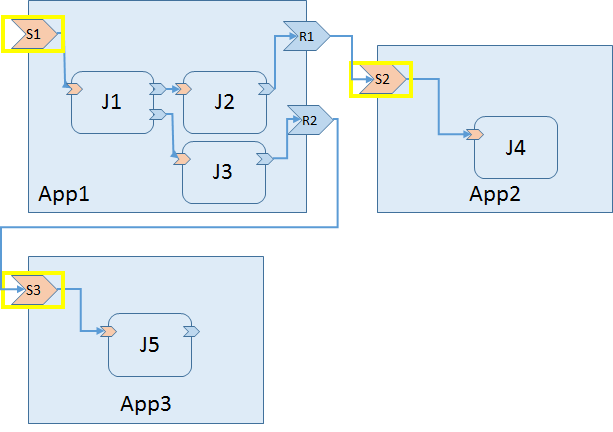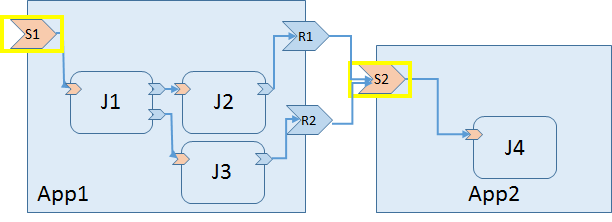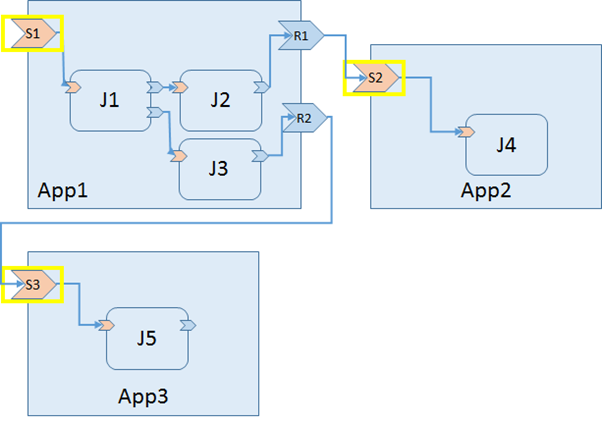Scenarios Explaining Custom Service Health Check
Scenario 1
In this scenario, only J2 has an annotated Service Health Check operation.
If a Service Health Check request is invoked on S1 with hops=1, the response generated will be:
S1 (Base Service Health Check response) -> J1 (Base Service Health Check response) -> J2 (Base Service Health Check response plus Custom Service Health Check response).
Scenario 2
In this scenario, only J4 has an annotated Service Health Check operation.
If Service Health Check request is invoked on S1 with hops=2, the response generated will be:
S1 (Base Service Health Check response) -> J1 (Base Service Health Check response) -> J2 (Base Service Health Check response) -> R1 (Base Service Health Check response) -> S2 (Base Service Health Check response) ->J4 (Base Service Health Check response plus Custom Service Health Check response).
Scenario 3
In this scenario, only J2 has an annotated Service Health Check operation.
If a Service Health Check request is invoked on S1 with hops=2, the response generated will be:
Scenario 4
In this scenario, only J2 has an annotated Service Health Check operation.If a Service Health Check request is invoked on S1 with hops=2, the response generated will be:
As J4 is reachable from two paths, the J4 Service Health Check response is added twice in the final Service Health Check Response.
Scenario 5 (Timeout)
In this scenario, J2 and J3 have annotated Service Health Check operations.
If a Service Health Check request is invoked on S1 with hops=2 and the time required by J3 for execution of Service Health Check operation is more than the time alloted to it, the response generated will be:








